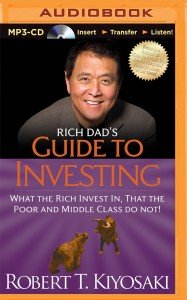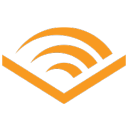 Book title: Rich dad’s guide to investing
Book title: Rich dad’s guide to investing
Author: Robert Kiyosaki
ISBN-10: 1612680216
ISBN-13: 978-1612680217
Buy here
What this book is about
Robert Kiyosaki, the author of the famous book, “Rich dad, poor dad”, has written a book named “Guide to investing”, which helps you build the right attitude to help you become rich. The book starts with a young Robert going to meet his mentor, whom he calls ‘rich dad’, and rich dad’s son. They are talking about investing in a very lucrative opportunity. While Robert asks to join in, the two politely respond to him that he couldn’t do it, since the opportunity was legally only for the ‘officially rich’, i.e. a networth of $1,000,000 and above. Stung by the incident, Robert consults his one and only guide on how to grow rich – his rich dad. The book is a culmination of what rich dad taught Robert about getting rich.
Financial literacy
One of the important points Robert talks about is that investments are not risky, but investors are, because they handle money and investments without being financially literate. Financial literacy should be the #1 priority of those who want to grow rich. For this, they must study about how money works and stop listening to hot tips and seasonal flavours on how to grow money quickly.
Investment is not a race and must stick to a plan
Robert reminds us that investment is not a race and that you should not compare your networth with someone else’s and grow anxious about how you are doing. Your investment strategies must be first made based on a financial goal that you set for yourself and what you want to do when you no longer want to work as an employee. He reminds us that as long as your investment grows as per your plan, you should not be worried about how someone else’s networth is doing.
Understanding financial statements
Robert talks about a simple way that he makes financial statements before acting upon any investment. The statement shows him income, expenses, assets and liabilities. As a rich person, he is always looking to use the expenses section of the statement to put things inside the assets section, so that they give him regular income. Assets are things that regularly put new cashflow to your income section, whereas liabilities are things that take money away from you in the expenses section. He suggests that we read multiple financial statements so that we get the full picture of how money is flowing between the statements. E.g. contrary to popular belief, a purchase house is not an asset but a liability as long as it isn’t earning you any income. You are always paying home loan repayments, property tax and maintenance cost on a house, so instead of adding cash flow to your income section, it is taking money away from your expenses section. A house can be an asset ONLY if one of the following is true: if a tenant is paying more rent than your loan repayments, property tax and maintenance costs combined or if you have managed to actually sell the house at a price higher than its cost price. Merely a speculated value on paper does not mean anything. In fact, your home is actually an asset for the bank who loaned you the money, before it is putting the money earned from interest into their pocket. This fact is clear only if you put together the balance sheet statements of both yourself and the bank together.
Types of income
Robert classifies income into three types: earned, portfolio and passive. While earned income is the income from a job or a gig, portfolio and passive incomes are money that you earn based on some asset that you hold. A portfolio income earns you money based on something you possess in paper form, e.g. dividends and capital gains from stocks, bonds and mutual funds, whereas passive income is the money earned based on an asset you possess, e.g. rent from your tenants, royalty from books you have written, subscription fees for a newsletter that you publish regularly or profits from a business that you own. Robert encourages us to use part of our earned money, save some of it for safety and use the rest to invest in or build assets. The sooner you reduce your ratio of earned income and increase your ratio of portfolio and passive income, the faster you can grow rich.
Types of investment
Robert talks about three types of money instruments to put your hard earned money into. The first category is for safety. This is the money you cannot afford to lose and must be put in ultra-safe vehicles of investment, such as bank deposits or government bonds. The second type of investment is for comfort. Once your basic needs are taken care of, you would want to enjoy a certain lifestyle and that accounts for a certain amount of money that you would need every year. This money can be put in slightly riskier instruments to gain more returns than standard bank deposits. These will be mostly portfolio income instruments. Finally, there are instruments that need a lot of work upfront to build into assets that you own. The process may fail, you may lose all your money, but you can always learn to do it the right way. But once an asset is built, it will earn you huge money for as long as you live and even leave plenty for your posterity.
Owning a business to get tax breaks
Robert talks about tax breaks that you can get if you were to invest in an asset as a business. Plenty of expenses can be written off as business expenses and an equivalent part of your income will not be taxed. E.g. if you need to hire a carpenter for your company to build furniture, you can write the expenses off as expenses for office furniture and that much amount will be exempted from taxes on your business income. On the contrary, an employee gets his / her salary after tax has been deducted from the source and there is no tax relief if he / she hires a carpenter for domestic furniture.
Investing in a business as an insider
Instead of waiting for a business to go public so that you can buy shares from the stock market, it is recommended to invest in businesses at a much earlier stage and as someone who has direct or at least influential control over how the business shapes up. This means that you can buy businesses which are currently priced low to buy out, but have a lot of potential to grow. Alternatively, you can invest in a business as either an angel or a private investor, so that you can take decisive calls in board meetings. The last two ways are called investing as an insider, whereas the stock market route is called investing as an outsider.
The B-I triangle
Robert talks about the paradigm of a Business-Investor triangle that is made of certain components to all businesses. Here are the components: Mission, leadership, team, cash flow, communications, systems, legal necessities and finally the product and its unique selling proposition. If any of the components of the B-I triangle is weak, the business suffers and cannot be expected to be profitable.
Conclusion
I have just touched on some of the main topics described in painstaking detail in the book. If you want to be rich, you need to shift your mindset from that of an employee thinking about what to do with the next pay cheque and start thinking in terms of building assets, businesses and a portfolio. So grab yourself a copy of this mind-changing and life-changing book and make your master plan for growing rich.

We know you love books. We would you like to give two FREE audio books. Grab your trial Audible Membership with Two Free Audio Books . Cancel at anytime and retain your books.
I am sure this article has touched all the internet people, its really really good piece of writing on building up wealth.
This book is a must read for anyone before they put their money into varied financial instruments and opportunities. My best take away from the book is that we must invest our time before we invest our money. The summary captures the lessons of the book really well.
Yes. It’s a book with principles and framework, rather than specific tips on what to invest.